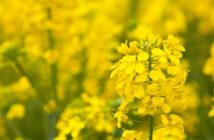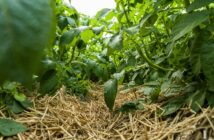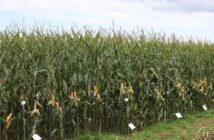NIAB and UCL (University College London) have been awarded £838,000 by the Biotechnology and Biological Sciences Research Council (BBSRC) to develop innovative methods to help improve UK wheat performance based on the MAGIC plant breeding research programme.
NIAB has generated the UK’s only Multi-parent Advanced Generation Inter-Cross wheat populations, known as MAGIC, by crossing multiple parent lines over multiple generations. MAGIC mixes up the genes from different parents far more than traditional crossing programmes, creating greater diversity in the subsequent generations and the ability to investigate many more traits within a single population.
Termed ‘MAGIC CARPeT’ this new project, funded via the BBSRC Biological and Bioinformatic Resources Fund, aims to develop an existing sixteen-parent wheat MAGIC population into a community resource for UK wheat researchers, along with supporting software and training opportunities. It will culminate in two large ‘community access’ field experiments at NIAB, where wheat researchers will be able to measure traits in the population of interest to them, as well as exchange ideas and receive training at associated workshops and conferences.
Dr James Cockram, Project Co-ordinator and Group Leader at NIAB, said “Wheat is critical for global food security but to meet rising demand, wheat yield increases around the world must be improved dramatically. MAGIC is a new approach in wheat research, with the potential to allow rapid advances in our understanding of how we can improve yield. The wheat resource used in this project, termed the ‘NIAB Diverse MAGIC population’, will be developed and made available to the global wheat research community.”
Prof Richard Mott, Weldon Professor of Computational and Statistical Genetics at UCL, said: “This work will provide tools and information to allow wheat researchers and breeders around the world to take best advantage of MAGIC approaches. It builds on our earlier BBSRC funding to develop statistical methods for analysing MAGIC populations of the model plant Arabidopsis, and is a good illustration of the synergies that arise by working with crops and model systems in parallel. “
The research team, which also includes Drs Alison Bentley, Phil Howell and Ian Mackay from NIAB, expect to uncover valuable diversity captured by the sixteen wheat parent lines; a selection of varieties grown in the UK from the 1940s through to the present day. Individuals within the population will carry unique combinations of genes, from both modern and heritage varieties. Re-shuffling the genetic information in historical and more modern varieties provides a new way to mine potentially favourable combinations, including genetic information that may have been lost in the process of wheat improvement over time.
Further information about NIAB’s wheat MAGIC populations can be found at www.niab.com/magic/



